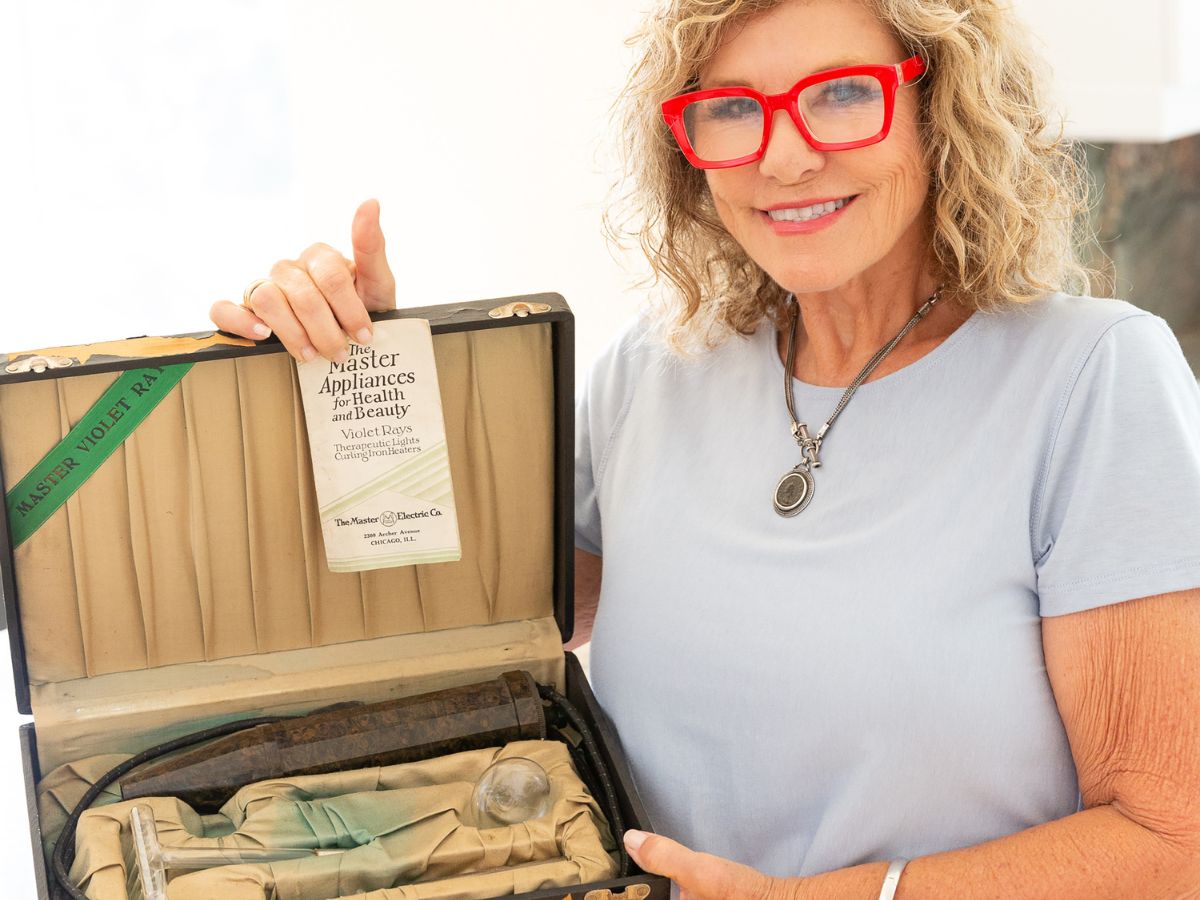
Medicine has changed dramatically since the time when peddlers hawked “cure-all” elixirs door-to-door and treatments like bloodletting were common. Intrigued by the history of medicine, Mill Valley doctor Toni Brayer, MD, has amassed hundreds of medical artifacts from bygone eras over the course of her career as a physician. We asked Brayer to tell us how she got started collecting and share a few of her favorite items.
Collector
Toni Brayer, MD
Collection
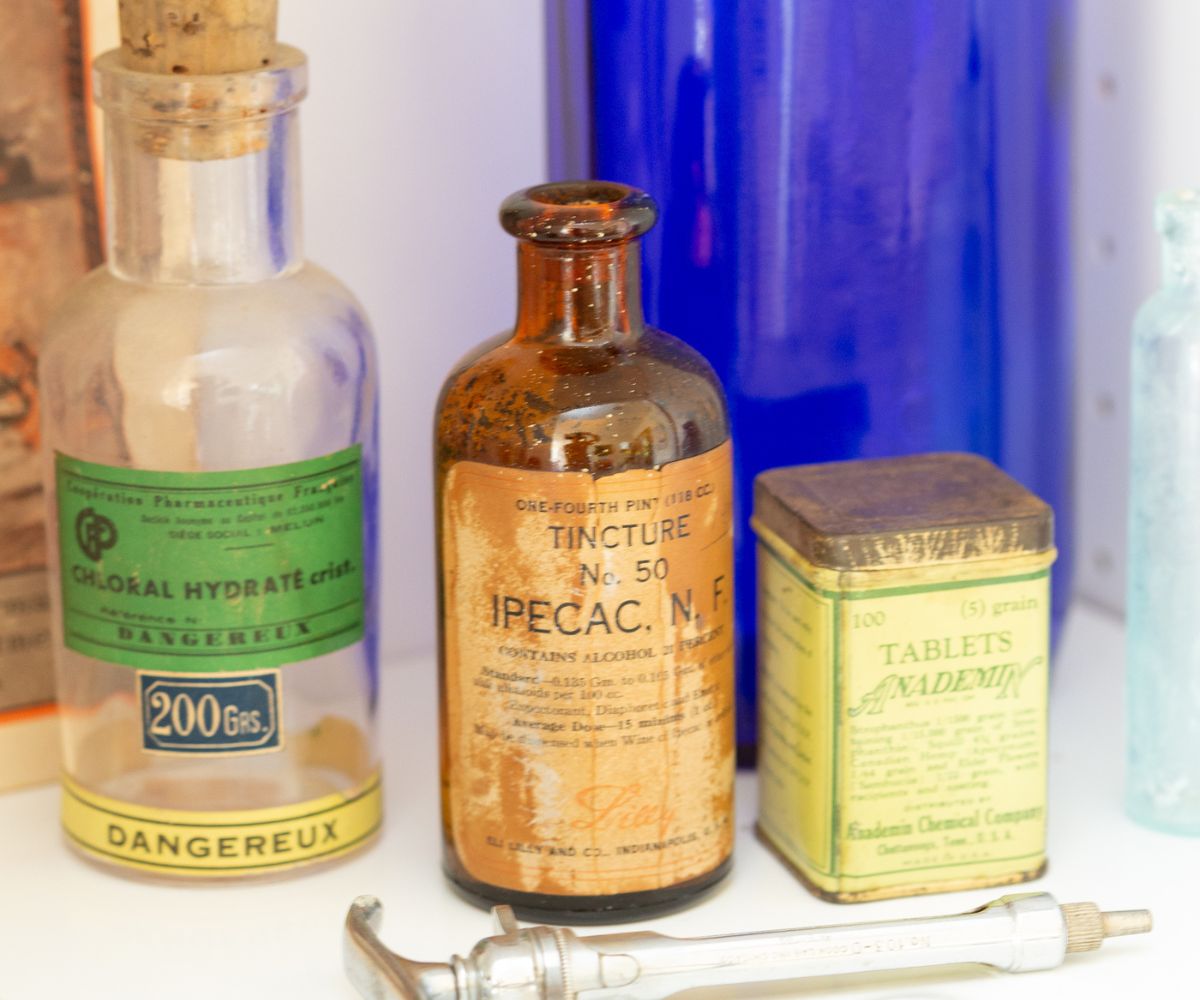
I collect medical artifacts and antiques. At the turn of the 20th century homemakers (women) were the main health providers in families. There were many “home cures” developed and sold to women through pamphlets. These small, mailed periodicals were a way for women to write down their recipes and home treatments, as well as a way for advertisers to sell their concoctions. There was no FDA or board or pharmacy, so doctors prepared their own medicines and sold them as cures.
I have a number of the women’s periodicals and the bottles sold with prices and ads for sanitariums. It’s a fascinating look at the role of women in society at that time. I have bottles and drugs that were sold and used as well as instruments (some scary) from that time. There are also quack items and vibrators and electrical devices that were supposed to cure all ailments.
Years collecting
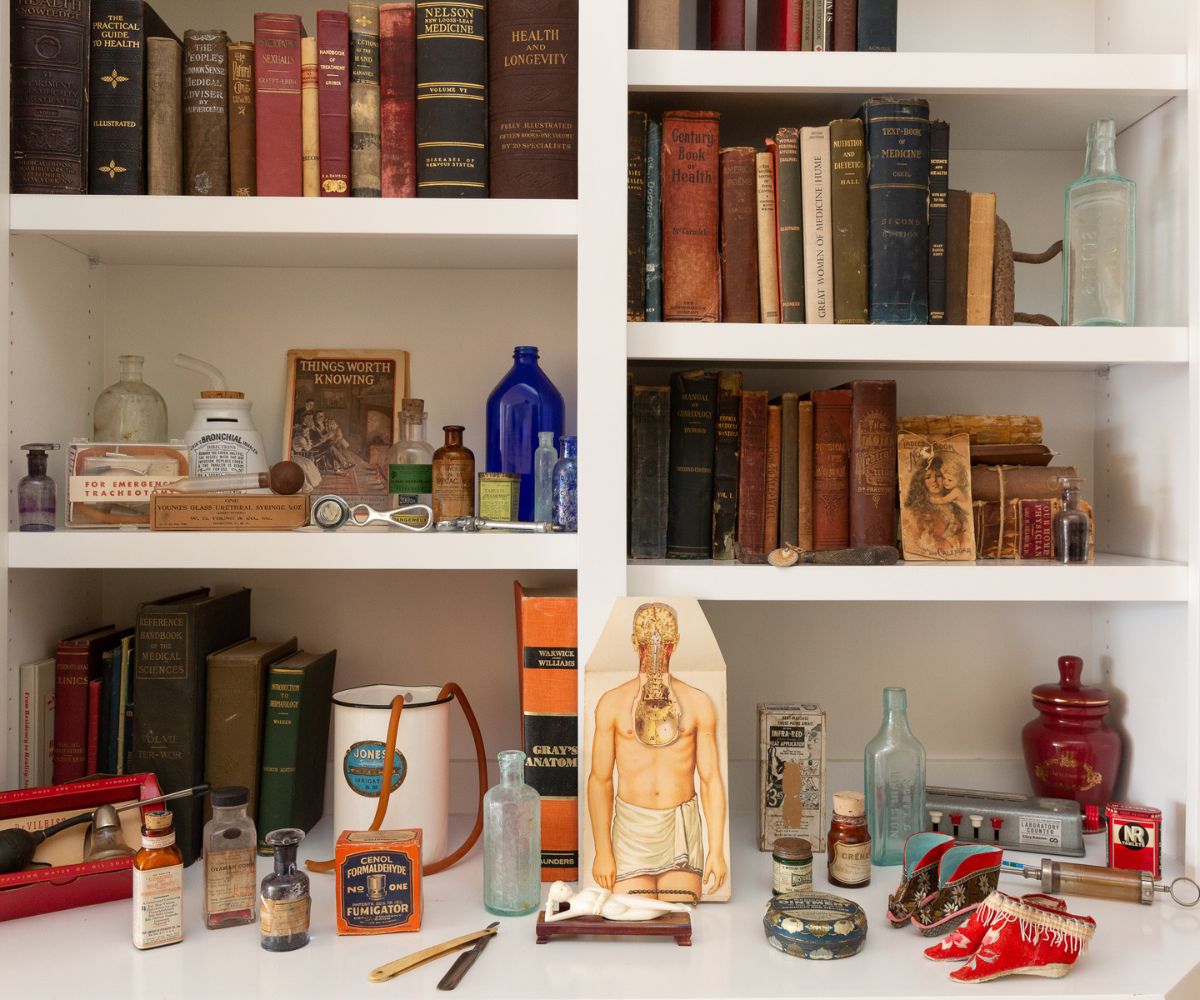
I’ve been in practice in San Francisco at California Pacific Medical Center (CPMC) for over 35 years and have always been interested in medical history and how medicine has changed over centuries. I started organically collecting whenever I was in antique stores but mainly on early eBay. I’ve received some things as gifts from patients. A few interesting items lead to more and more until it became a passion.
How many pieces?
I have hundreds of items, including books, artifacts, medical tools and bottles.
Where do you keep them?
They used to be on a display cabinet in my office. My office practice changed so now they are on my bookshelf at home and tucked away in boxes. I have so many wonderful and interesting items. I would like to donate them to a museum or medical college because patients and even young doctors would be interested in the historical nature of these items.
Why?
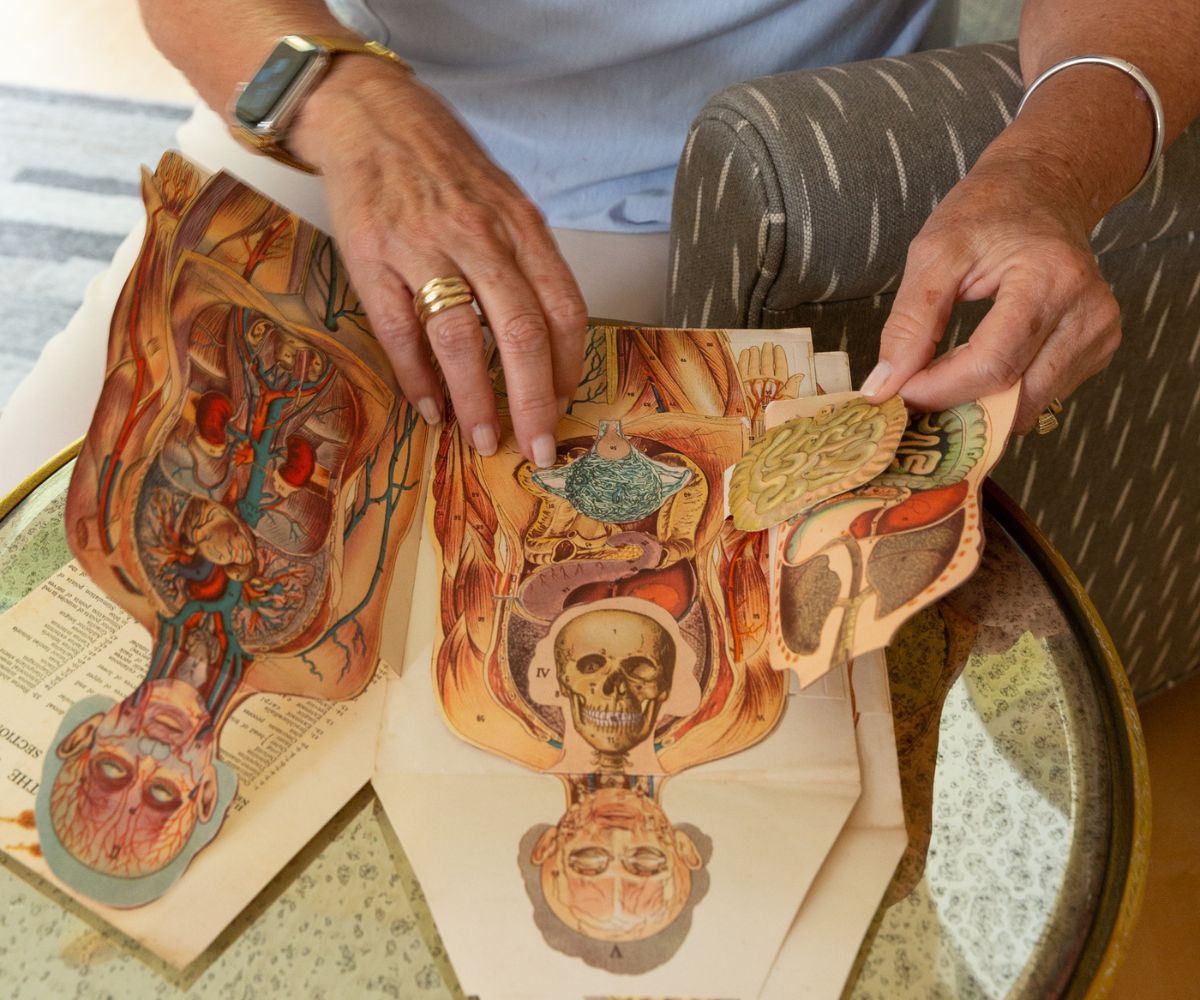
I started medical school late at age 30, and that gave me a different perspective about history. I love medical history and reading about the dramatic changes in medicine, discoveries, quackery, women in medicine and evolution over the past centuries. The artifacts from the past are so interesting to me. Once I got started, I couldn’t stop.
Favorite?
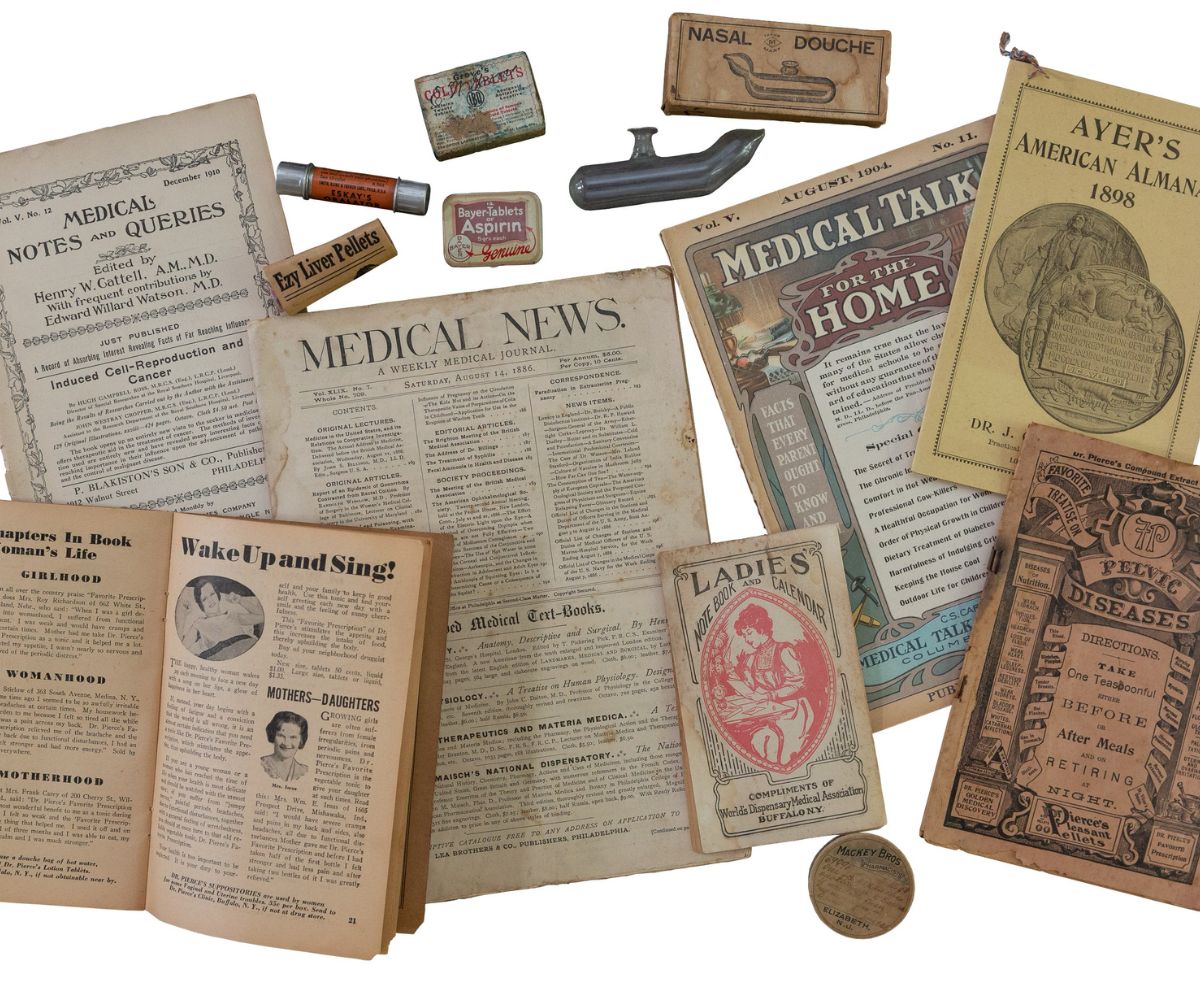
I have several favorites. I have several Chinese embroidered shoes that were used in foot binding of Chinese women at the turn of the century. Foot binding wasn’t banned until 1912. The Shunzhi emperor had actually banned the practice in 1645 but unfortunately, his successor revoked the ban, and it became a custom firmly rooted in Chinese tradition.
I really enjoy the soft pamphlets I have because you can get a glimpse into the life of women, how they cared for their families and how advertisers targeted them with cures.
I also have books with fold-out drawn dioramas that reveal piece by piece the inner workings of the body. They are really special.
Oldest items?
I have a number of books from the 1860s.
Most unusual?
The electric Master Violet Ray therapeutic light for health and beauty. These violet ray treatments were said to cure everything from lower back pain to carbuncles.
Fun fact
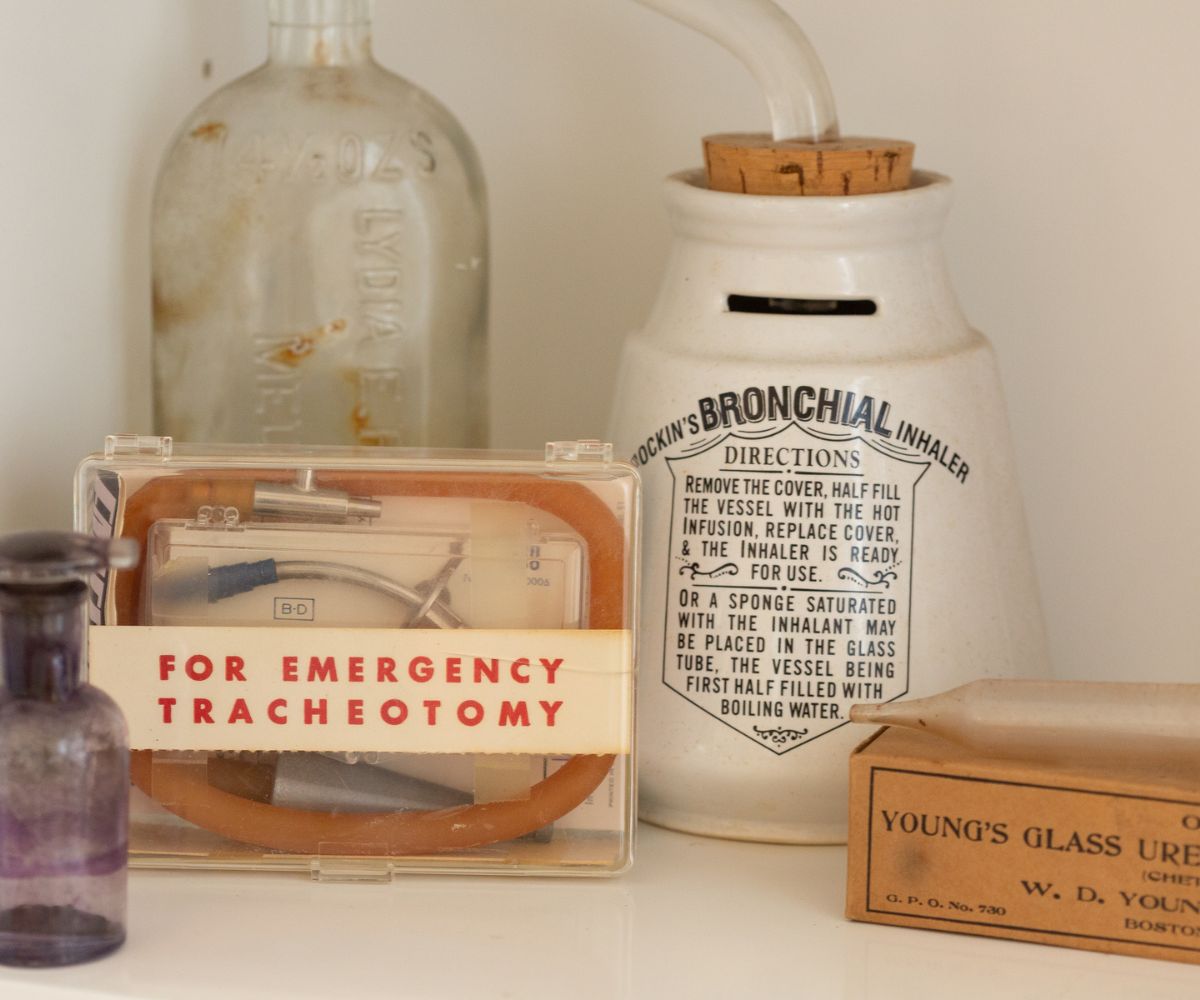
My family finally had to say, “Quit collecting; you should be selling on eBay, not buying!” But I think all collectors will say it brings much pleasure and is cheaper than therapy.
Parting thoughts
Medicine has come a long way in the past 150 years. We’re in a golden age with all the advancements and science, and this collection proves it.
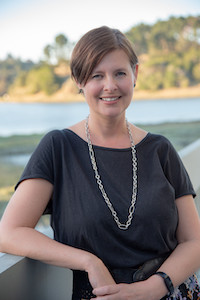
Lotus Abrams has covered everything from beauty to business to tech in her editorial career, but it might be writing about her native Bay Area that inspires her most. She lives with her husband and two daughters in the San Francisco Peninsula, where they enjoy spending time outdoors at the area’s many open spaces protected and preserved by her favorite local nonprofit, the Peninsula Open Space Trust.

